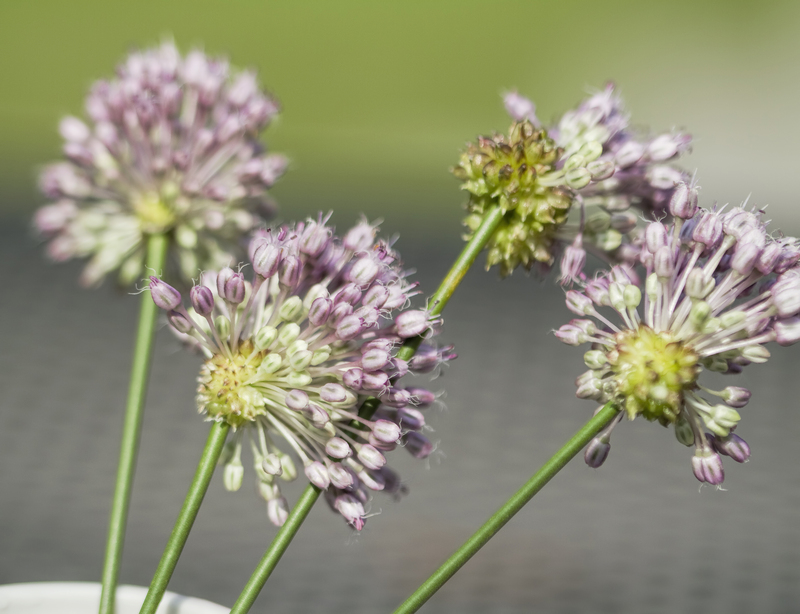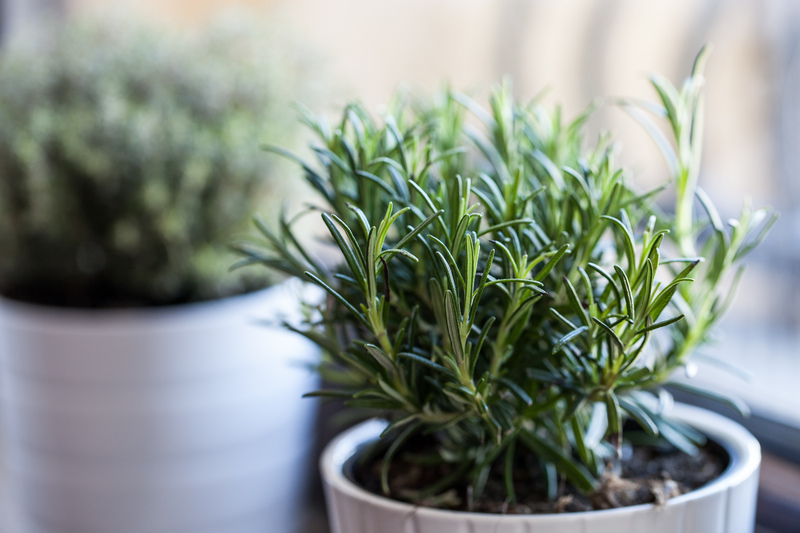Pawprints in the Soil: Gardening Tips for Dog Owners
Posted on 25/05/2025
Pawprints in the Soil: Gardening Tips for Dog Owners
Gardening with dogs can be both joyful and challenging. Our furry companions love to explore, dig, and sniff, leaving their pawprints in the soil--sometimes to the dismay of even the most devoted plant lover. But fear not! With strategic planning and a little understanding, you can create a lush, green oasis that's both dog-friendly and beautiful. In this comprehensive guide, we'll dig into essential gardening tips for dog owners, exploring everything from plant safety to clever landscaping solutions, all while keeping your four-legged friend's happiness top of mind.
Why Consider Pawprints in Your Garden?
Dogs bring life and energy to any garden, but their natural behaviors--running, digging, exploring--can quickly test the patience of even the greenest thumbs. Taking time to understand your dog's needs and natural instincts can help you shape a welcoming and resilient outdoor space. Gardening with dogs isn't about restricting their play, but about harmonizing your landscaping with your pet's lifestyle.
- Active dog breeds often need sturdy play zones to burn energy.
- Digging breeds (like terriers) may require designated digging areas.
- All dogs need safe, non-toxic plants and substances in their environment.
- Proper fencing and deterrents help set healthy boundaries for both plants and pets.

Create a Safe and Dog-Friendly Garden
1. Choose Pet-Safe Plants
Many common garden plants are toxic to dogs. Choosing the right flora is the cornerstone of gardening with pets. Here's how to ensure a safe landscape:
- Avoid toxic plants: Common offenders include azaleas, daffodils, tulips, foxglove, lilies, and sago palm.
- Opt for dog-friendly flowers and shrubs: Examples include sunflowers, roses (watch the thorns!), snapdragons, camellias, and marigolds.
- Read plant labels: When in doubt, check with the ASPCA's list of toxic and non-toxic plants.
- Consider native plants: Local species are often hardier and less likely to pose health risks.
Tip: If you're unsure about a plant, do not plant it where your dog can access it. Safety first!
2. Designate Dig Zones
Many dogs instinctively dig. Instead of fighting this behavior, embrace it by creating a designated digging bed just for your dog!
- Fill a corner with soft, loose soil or sand where your dog is allowed to dig.
- Bury treats or toys in the spot to encourage use.
- Redirect your dog to the zone with gentle encouragement when caught digging elsewhere.
With consistency, your dog will learn to seek out their own little corner--protecting your cherished flowerbeds and veggie patches.
3. Pathways for Paws
Dogs love to patrol their territory and often create "desire paths." To avoid ruined lawns or damaged flower beds:
- Observe your dog's favorite routes--place paths where they naturally walk.
- Use durable materials like pea gravel, flagstone, or mulch for comfortable, paw-safe pathways.
- Create curves to add visual interest and gently direct movement.
Tip: Avoid cocoa mulch--it smells great to dogs but contains toxic theobromine.
4. Fencing and Borders
Keep both plants and pets safe by establishing clear boundaries:
- Low fencing around flower beds can deter curious noses.
- Lattice panels or willow hurdles provide decorative protection.
- Living borders like boxwoods or lavender hedges add beauty and natural deterrence.
Strong fencing prevents escape artists from leaving the yard. Always secure gates and regularly check for digging under or jumping over areas.
Essential Gardening Practices for Dog Owners
1. Safe Mulching
Mulch helps gardens retain moisture and suppresses weeds, but not all mulch is created equally in a dog-friendly garden.
- Avoid cocoa mulch: As mentioned, it's toxic to dogs.
- Opt for cedar, pine, or untreated wood chips.
- Steer clear of dyed or chemically treated mulch.
- Always check for sharp sticks or splinters that could injure paws.
2. Water Features and Dog Safety
A bubbling fountain or small pond can be irresistible to both dogs and humans. Keep pets safe by keeping these guidelines in mind:
- Choose shallow water features or cover ponds with mesh when unsupervised.
- Ensure water is clean and free of algae, which can be toxic to dogs.
- Provide an additional fresh water bowl outside, so your dog isn't tempted to drink pond water or standing water.
- If you have fish, use dog-safe netting to prevent accidental diving.
3. Chemical-Free Gardening
Synthetic pesticides, herbicides, and fertilizers can harm pets. Opt for organic or pet-safe alternatives:
- Use organic fertilizers like compost or manure, avoiding chicken manure which can upset some dogs' stomachs.
- Apply neem oil or insecticidal soap for plant pests--they're less likely to harm dogs than chemical sprays.
- If you must use chemicals, keep pets indoors until products have dried or dissipated (refer to the product's label).
4. Compost Safety
A compost pile recycles kitchen and garden waste, but can be problematic for inquisitive canines.
- Keep compost covered or fenced so your dog can't access moldy foods or toxic items (like onion skins, grapes, or non-plant matter).
- Avoid adding bones, meat, or dairy, which may attract pets.
- Teach dogs that the compost is off-limits by providing positive reinforcement.
5. Tidy Up After Playtime
Remove chew toys, bones, and food items from the yard--this discourages digging and keeps your garden neat. Regularly pick up dog waste to prevent burns on grass and reduce the risks of parasites.
Landscaping Ideas for Beautiful, Dog-Safe Yards
1. Install a Sandbox
A dedicated doggy sandbox can be the ultimate garden enrichment tool for diggers. Make it inviting by placing toys or treats in the sand and changing the location occasionally to keep things interesting!
2. Shade and Shelter
Dogs need a cool retreat from the sun. Plant fast-growing shrubs or small trees, or add a raised doghouse to provide cooling shade as part of your overall dog-friendly landscaping.
3. Xeriscaping and Tough Ground Covers
Hardy ground covers, such as creeping thyme, Irish moss, or clover, are tougher than standard turfgrass and withstand rough play and foot traffic. Xeriscaped gardens also reduce water needs and maintenance.
4. Raised Beds and Vertical Gardens
Elevating garden beds protects plants from trampling paws. Use wooden, stone, or metal planters for aesthetic appeal and function. Similarly, vertical gardening utilizes walls or fences to maximize space and safety.
5. Install an Outdoor Dog Shower
An easy-to-use dog wash station by your garden entrance minimizes muddy pawprints inside. This is especially helpful after a spirited afternoon of playing in the soil or swimming.
Dog-Proofing FAQ: Common Gardening Challenges with Dogs
1. How do I keep my dog from eating my plants?
- Plant non-toxic varieties.
- Use deterrent sprays (like bitter apple) on leaves.
- Distract with dog-friendly toys or treat puzzles in the yard.
2. What if my dog digs up bulbs or new plants?
- Use physical barriers like wire mesh below the soil.
- Cover new plantings with garden cloches until established.
- Redirect digging to a sandbox or designated area.
3. How do I protect the lawn from dog urine?
- Train your dog to urinate in a specific gravel or mulch spot.
- Water the area immediately after your dog urinates to dilute it.
- Consider using lawn repair seed or dog urine-resistant grass blends.
Dog-Friendly Plants: A Quick Reference
Here's a brief list of plants that are generally safe for dogs (always double-check specific varieties and consult your veterinarian):
- Snapdragons
- Creeping thyme
- Marigolds (Calendula)
- Sunflowers
- Petunias
- Camellias
- Roses (avoid the thorns!)
- Bamboo palm
And some plants to avoid:
- Azaleas
- Lilies
- Sago palm
- Foxglove
- Oleander
- Autumn crocus
- Castor bean

Enriching Outdoor Life for Both Dogs and Humans
A dog-friendly garden isn't just about keeping your pet out of trouble-- it's about creating an enriching, enjoyable space for the whole family.
- Incorporate sensory elements: Dogs love scents--plant robust, non-toxic herbs like basil or thyme for a delightful garden aroma your dog can safely sniff.
- Stimulating toys and agility equipment invite active play while minimizing destructive boredom.
- Create seating and resting areas for humans to enjoy the garden side by side with their canine companions.
Conclusion: Celebrate Your Dog's Pawprints in the Soil
Integrating dogs into your gardening life means expecting the occasional muddy pawprint and the odd nibbled leaf. But with foresight, the right plant choices, and strategic design, you can cultivate a safe, beautiful, and dog-proof garden that welcomes both canine and human guests.
Remember--gardening with dogs is an ongoing journey. Every garden tells a story, and your dog's pawprints just add personality to the pages. Embrace the adventure and let your landscape flourish for both you and your loyal friend!
Further Resources
- ASPCA Plant Toxicity Database: Browse toxic and non-toxic plants for dogs
- The Humane Society: Tips for pet-safe gardens
- Local Cooperative Extension Services: Offers regional planting guides and pet safety advice.
Happy gardening! May every pawprint in your soil be the start of new growth and joyful memories with your best furry friend.

